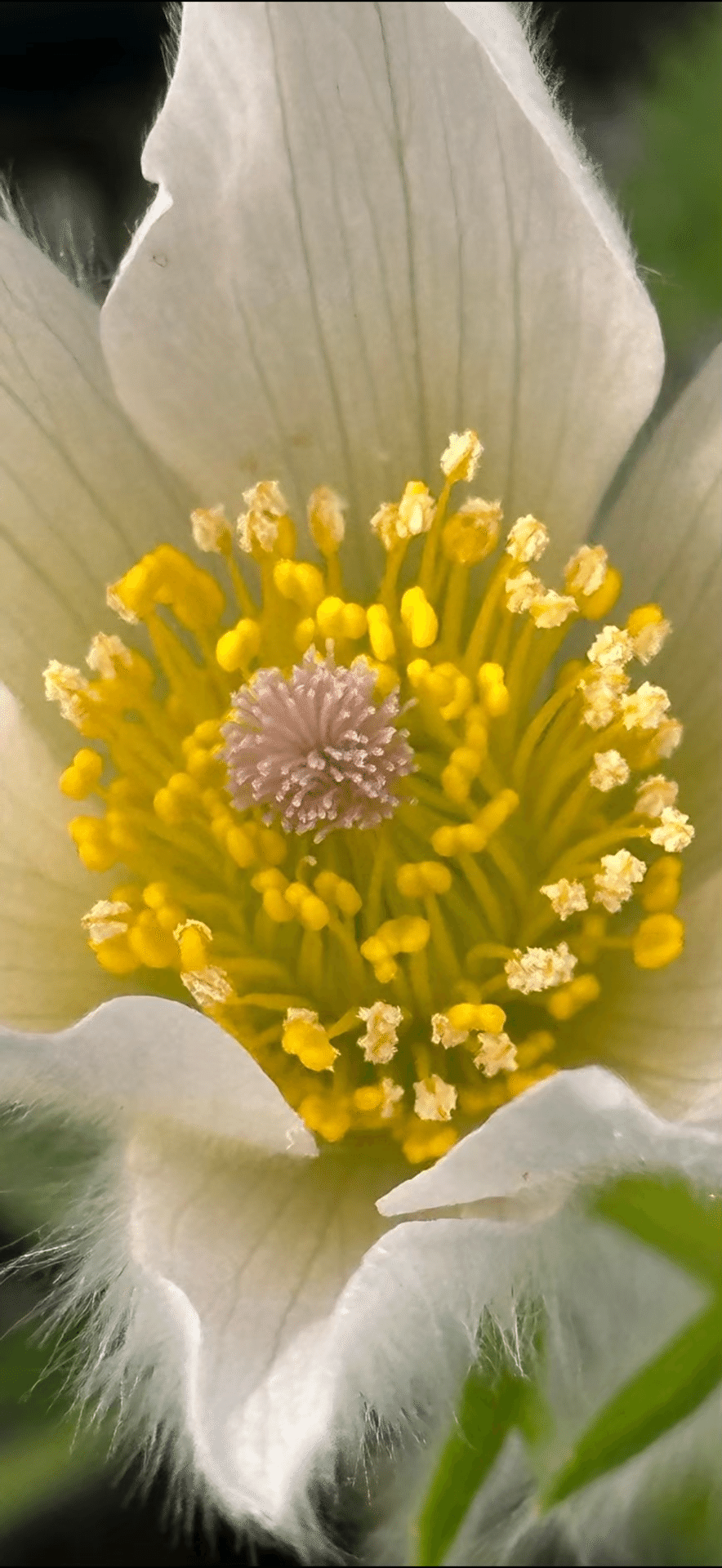
オキナグサ 色んな名前を詳しく紐解く
翁草 (オキナグサ)
キンポウゲ目、キンポウゲ科、オキナグサ属に
属し、日本、中国、朝鮮半島に分布する多年草。
春に釣鐘型の花が下向きに俯いた様に咲くため
どこか儚げな印象を与えるものである。花後に
白い綿毛を持つ果実を形成、それがまるで老人
の白髪のように見えることから、この『翁草』
(オキナグサ)の名前がつけられた。
このオキナグサには複数の別名があり、それら
の名前が付いた由来もまた面白いものである。
そんな名前をひとつひとつ、紹介してみよう。
と云う事で次の名、『猫草』(ネコグサ)である。
オキナグサの果実の綿毛はフワフワとしており
これがまた猫の毛に似ていることから、こんな
名前でも呼ばれている。昔の時代、まだ西洋の
植物などが日本に入る前には、当たり前に身近
にあった植物、猫がこれの綿毛とじゃれて遊ぶ
様子が見られた事も、この名の由来のひとつと
なっている。
続いては、『猫戯』(ネコジャラシ)の名前。
いやいや、『ネコジャラシ』といったら通常なら
『狗尾草』(エノコログサ)のことを指すところが
一部の地域では、このオキナグサの綿毛を猫が
好んで触る事から、そう呼ぶのだそうである。
確かにこのモコモコフワフワなものは猫たちが
目の色を変えるシーンなど、容易く想像できる。
狩猟動物である猫にとって小動物を連想させる
ものは野生の血を激らせてくれるからである。
続いては、『博打草』(バクチグサ)
オキナグサこの名前は、オキナグサの根が薬草
として利用されることに由来する。オキナグサ
の根には鎮痛作用があり、昔は解熱剤や民間薬
として使われていました。しかし、誤用すると
その毒性により、健康を害する事もあったため
『博打のように危険な草』という意味を由来とし
『博打草』(バクチグサ)と呼ばれたとされる。
さらには、『善界草』(ゼガイソウ)
この『善界』なる耳に馴染みない言葉は、能の
演目があり、その中に登場する大天狗が被った
赤熊(シャグマ)という装飾物に、オキナグサの
フワフワの実姿が似てる事に由来して、白頭翁
との連想によるものとされていて、室町時代に
宮中や幕府などの貴族や武士の間で呼ばれてた
名となっている。
それぞれに、昔の人たちの間で呼ばれた色々な
名前にもその当時の思い入れもあって呼ばれた
名前たち。そんな記録も出来るだけこんな風に
記事にして残したいと思っている。
さて、この花を間近で見てみると萼片の裏側に
繊細な細い毛並みが見られるもので、ちゃんと
花の時からオキナグサの特徴を覗かせている。
このオキナグサには花弁は存在せず、大きな花
に見える部分は萼片となっている。
花が咲く時期までは茎は30cm程であるのが
花が終わって種の時期になるとその茎は倍まで
伸び、60cmにもなる。綿毛の生えた種達を
遠くまで飛ばすための工夫であり、そのために
生えている綿毛なのである。
■■■■■■■■■■■■■■■■■■■■■■■■■■■■
Pulsatilla cernua (Okina-gusa, “Old Man Grass”)
Pulsatilla cernua, commonly known as Okina-gusa, is a perennial herb belonging to the order Ranunculales, family Ranunculaceae, and genus Pulsatilla. It is native to Japan, China, and the Korean Peninsula.
In spring, it produces bell-shaped flowers that droop downward, giving it a somewhat delicate and ephemeral appearance. After flowering, it forms fruits covered in white, cotton-like hairs, which resemble an elderly person’s white hair. This distinctive characteristic is the origin of its Japanese name, 翁草 (Okina-gusa), meaning “Old Man Grass.”
Okina-gusa has multiple alternative names, each with a unique and fascinating origin. Let’s take a look at some of them.
1. “Neko-gusa” (猫草, “Cat Grass”)
The fruit of Okina-gusa is covered in soft, fluffy hairs, which resemble cat fur. Because of this, it has also been called “Neko-gusa” (Cat Grass). In the past, before Western plants were introduced to Japan, Okina-gusa was a common sight, and people often observed cats playing with its fluffy seeds. This playful interaction likely contributed to the name’s origin.
2. “Neko-jarashi” (猫戯, “Cat Teaser”)
Normally, the name “Neko-jarashi” (Cat Teaser) refers to Setaria viridis (狗尾草, Enokoro-gusa, also known as green foxtail). However, in some regions, Okina-gusa is also called “Neko-jarashi” because cats enjoy touching its soft, fluffy fruit.
It is easy to imagine cats being mesmerized by its woolly texture. As natural hunters, cats are instinctively drawn to objects that resemble small animals, which might explain their fascination with Okina-gusa.
3. “Bakuchi-gusa” (博打草, “Gambling Grass”)
This name originates from the plant’s medicinal uses. The root of Okina-gusa was traditionally used in herbal medicine for its analgesic properties. It was once employed as a fever reducer and folk remedy. However, misuse could lead to poisoning, making it a plant with both healing and harmful potential. Because of this risk, it came to be known as “Bakuchi-gusa”—a reference to gambling, as using the plant was seen as a dangerous bet.
4. “Zegai-sō” (善界草, “Zegai Grass”)
The term “Zegai” (善界) is an uncommon word but appears in a Noh play featuring a great Tengu, a mythical creature. In the play, the Tengu wears a decorative wig called Shaguma (赤熊), which resembles the fluffy fruit of Okina-gusa. Additionally, the plant’s white-haired appearance was associated with the Hakutōō (白頭翁, “White-headed Old Man”), further reinforcing its connection to this name. During the Muromachi period, “Zegai-sō” was used by aristocrats and samurai at the imperial court and shogunate.
Each of these names reflects the perspectives and sentiments of people in the past. Preserving these alternative names and their histories is valuable, and I aim to document them through articles like this.
Okina-gusa’s Unique Flower Structure
Upon close inspection, the underside of Okina-gusa’s sepals is covered in fine, delicate hairs. Even at the flowering stage, this detail hints at the plant’s distinctive fluffy appearance later on.
Interestingly, Okina-gusa has no petals—the large, flower-like structures are actually sepals.
When the flower blooms, its stem is about 30 cm tall, but after flowering, as the seeds develop, the stem lengthens to 60 cm. This elongation helps disperse the fluffy, wind-carried seeds over greater distances—a clever adaptation for seed dispersal.
■■■■■■■■■■■■■■■■■■■■■■■■■■■■
花が終わった後のフワフワの実姿
The fluffy fruit appearance after the flower has withered.


■■■■■■■■■■■■■■■■■■■■■■■■■■■■
続いて花姿、萼片の裏側にもフワフワな毛がある
Next, looking at the flower’s appearance, the underside of the sepals also has fluffy hairs.





■■■■■■■■■■■■■■■■■■■■■■■■■■■■
和名 翁草 (オキナグサ)
猫草 (ネコグサ)
猫戯 (ネコジャラシ)
博打草 (バクチグサ)
善界草(ゼガイソウ)
洋名 アネモネ セルヌア
(ANEMONE CERNUA)
ノディング アネモネ
(NODDING ANEMONE)
オキナグサ
(OKINA-GUSA)
学名 プルサティラ セルヌア
(PULSATILLA CERNUA)
分類 キンポウゲ目、キンポウゲ科、
オキナグサ属、オキナグサ種
種類 多年生草本
草丈 15〜30cm
開花 4〜5月
花色 赤紫
赤茶
白
花径 6〜8cm
花弁 0枚
萼片 6枚
原産 日本(本州から九州)、朝鮮、中国
言葉 何も求めない
奉仕
撮影 京都府立植物園
咲くやこの花館
■■■■■■■■■■■■■■■■■■■■■■■■■■■■
#翁草
#オキナグサ
#猫草
#ネコグサ
#猫戯
#ネコジャラシ
#博打草
#バクチグサ
#善界草
#ゼガイソウ
#アネモネセルヌア
#ANEMONECERNUA
#ノディングアネモネ
#NODDINGANEMONE
#OKINAGUSA
#プルサティラセルヌア
#PULSATILLACERNUA
#京都府立植物園
#咲くやこの花
■■■■■■■■■■■■■■■■■■■■■■■■■■■■
